Pink Floyd Albums Ranked from Worst to Best
Chances are that you’ve heard of the name Pink Floyd. Starting life as a psychedelic outfit under the leadership of Syd Barrett, Pink Floyd eventually grew into progressive rock legends that many revere as one of the greatest and most influential artists of all time. It’s clear to see why, as monumental records like “The Dark Side of the Moon” and “The Wall” have stood the test of time while also providing the blueprint for some of music’s greatest accomplishments. Very few can say that they’ve had a discography as thoroughly enjoyable and as impactful as Pink Floyd.
That said, not everything they touched turned to gold. Although the quartet of bassist Roger Waters, guitarist David Gilmour, keyboardist Rick Wright and drummer Nick Mason made some incredible music during their time together, some of their works don’t hold up as well as others. In this article, we place all 15 entries of Pink Floyd’s studio record output under the microscope and rank them from worst to best.
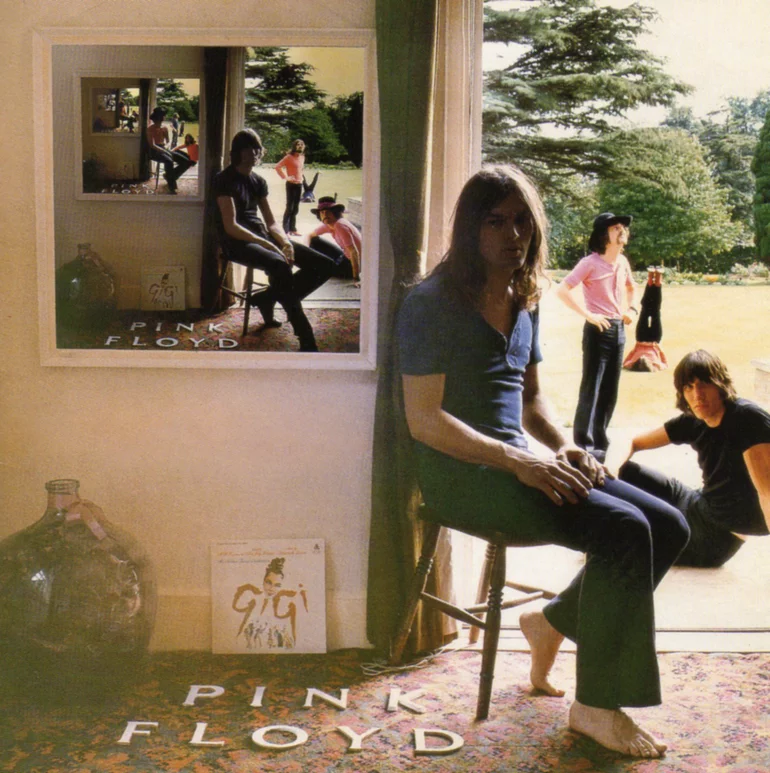
15. “Ummagumma” (1969)
The departure of Barrett in 1968 sent Pink Floyd searching for the new sound that would redefine their career. They didn’t find it on “Ummagumma,” a wildly experimental record that too often drifts into nonsense for its own good.
For “Ummagumma,” the four remaining band members decided to write and record the tracks separately, and the end results are quite a mess. Nothing encapsulates this sentiment better than Waters’ ridiculous “Several Species of Small Furry Animals Gathered Together in a Cave and Grooving with a Pict,” which is, quite literally, five minutes of Waters making animal noises and spouting off nonsense in a hokey Scottish accent. Not good at all, and quite frankly, Wright’s and Mason’s contributions aren’t much better.
The only salvageable numbers are Waters’ pleasant acoustic ballad “Grantchester Meadows” and Gilmour’s brooding three-part suite “The Narrow Way.” Even then, they don’t quite stack up with the timeless pieces that Pink Floyd would soon unleash. If anything, “Ummagumma” proved that Pink Floyd was best off when working as a unit.
It’s almost as if Pink Floyd knew they needed something to counteract the studio failures of “Ummagumma,” as the record also comes packaged with a second disc, which features live renditions of old favorites. It’s actually quite good, and the versions of “Careful with That Axe, Eugene” and “A Saucerful of Secrets” especially are improvements on their studio counterparts. But they’re not enough to save “Ummagumma” from earning the bottom spot on this list.
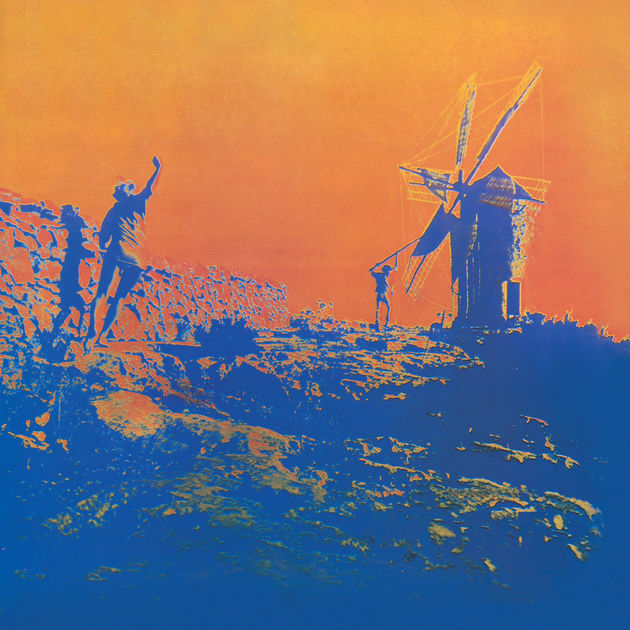
14. “More” (1969)
Pink Floyd’s first record without any contributions from Barrett also serves as the soundtrack to a film of the same name. Both the film and the album have been largely forgotten by time, but the latter does have some parts worth exploring.
“More” itself is an exploratory album, as Pink Floyd forays into all kinds of genres with varying levels of success. There are a handful of gems in this mixed bag, including the ominous “Cymbaline” and the lovely folk ballad “Green Is the Colour.” “The Nile Song” stands out as the closest that Pink Floyd ever got to heavy metal, and psychedelic cuts like “Main Theme” and “Cirrus Minor” also warrant attention.
But there are some clunkers here too, such as the grating “Quicksilver,” the absurd “A Spanish Piece,” and the completely unnecessary “Party Sequence.” Pink Floyd’s lone attempt at improvisational jazz, “Up the Khyber,” doesn’t do much to appeal either.
While “More” does have its flashes of brilliance, it more so represents a band looking for direction, and, considering that “Ummagumma” came next, it clearly took them some time to find it.

13. “The Endless River” (2014)
Released 20 years after “The Division Bell” and six years after the death of Rick Wright, “The Endless River” is Pink Floyd’s final record and a bit of an oddity.
Repurposing many of the outtakes from “The Division Bell” recording sessions, Gilmour and Mason, in part, created “The Endless River” as a tribute to their deceased bandmate. It certainly sounds like a spiritual successor to the previous album, what with Gilmour’s guitar tones and its heavy focus on Wright’s ethereal keyboards. But this causes it to feel more like a collage of leftovers than a full-on studio record.
Being entirely instrumental, save for the final song “Louder than Words,” “The Endless River” tends to be a bit on the forgettable side, as it’s often difficult to distinguish one song from another, considering how they blend into each other. Then again, this was likely Pink Floyd’s intention, as each song is labeled by the side of vinyl it appears on, as if each side were one flowing song instead of three or four separate entities. The first side, which features the trio of “Things Left Unsaid,” “It’s What We Do” and “Ebb and Flow,” is probably the best of the bunch.
Overall, “The Endless River” is far from an ambitious project, but it serves its purpose well, and the fact that it gave longtime fans a solid batch of new material to chew on is worth praising.

12. “A Momentary Lapse of Reason” (1987)
Following the messy exit of Waters in 1985 and a series of legal disputes, Pink Floyd veered in a new direction once again, as Gilmour, Mason and the newly re-hired Wright were joined by fifteen additional musicians and five additional songwriters for the more pop-oriented “A Momentary Lapse of Reason.”
As the first record without Waters, “A Momentary Lapse of Reason” has often been panned for being drenched in cheesy ‘80s production and lacking the same high-quality songwriting of previous efforts. While there is some validity to these criticisms, they also undercut the successes that Pink Floyd was able to achieve. There’s some genuinely excellent stuff here, namely “Learning to Fly,” “On the Turning Away” and especially “Sorrow,” a heavy-hitting closer that features some of Gilmour’s very best guitar work.
The rest of the album ranges from solid (“Yet Another Movie,” “The Dogs of War”) to weak (“A New Machine,” “Round and Around”), but nothing is truly as atrocious as some critics would have you believe.
“A Momentary Lapse of Reason” may feel a bit underwhelming compared to past triumphs, but the band’s knack for musicianship was not lost, and there are enough enjoyable moments here to warrant some appreciation.

11. “A Saucerful of Secrets” (1968)
A paradigm record for Pink Floyd, “A Saucerful of Secrets” is unique in that it is the only album that features contributions from all five members, being Barrett’s last and Gilmour’s first.
Although the album does bear some similarities to its Barrett-driven predecessor in its overall psychedelic feel, “A Saucerful of Secrets” more clearly shows that change was imminent. Barrett’s whimsical, often childish lyrics are abandoned for more avant-garde themes. This is represented well in the spacey opener “Let There Be More Light,” as well the moody burner “Set the Controls for the Heart of the Sun,” which would later be expanded upon in live shows.
The album also delves into more human themes, such as longing for days past (“Remember a Day”) and even anti-war sentiment (“Corporal Clegg”), a theme that Waters in particular would go on to explore more in depth.
The only song that has much semblance of Barrett’s presence is the closing “Jugband Blues,” a darker Barrett-penned piece that depicts his begrudging acceptance with his growing estrangement from reality and fast-approaching departure from Pink Floyd. It’s not Barrett’s best song, but it may be his most insightful one.
While not entirely cohesive or fully realized, “A Saucerful of Secrets” is a solid record that features a handful of early Floyd greats, and it deserves recognition for painting a clear picture of the band in transition.
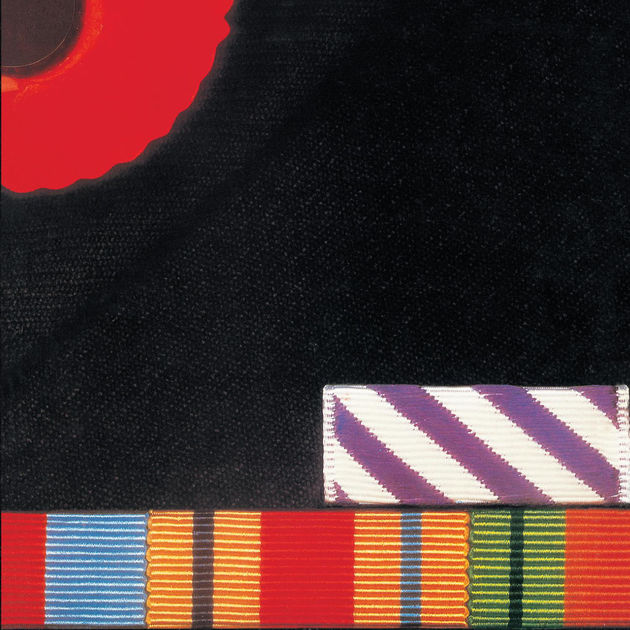
10. “The Final Cut” (1983)
It’s been said before, but it really is the truth: “The Final Cut” is a Roger Waters solo album in all but name. The Floyd bassist wrote and sang lead for every song on the record, sharing the mic with Gilmour only on the penultimate track “Not Now John.”
As such, “The Final Cut” could be considered Pink Floyd’s most cohesive record, as all 43 minutes of it are an unrelenting attack against war and conservative British policies of the time. But where it stumbles is its lack of soul. This could be blamed on the absence of Wright, who Waters had fired from the band a few years prior, but the contributions of Gilmour and Mason often feel less emotive and heartfelt than they did on records past, likely due to Waters’ iron grip. As much as Waters would have liked to believe it in 1983, he couldn’t be Pink Floyd by himself.
Despite this, “The Final Cut” still has its fair share of classics. The aforementioned “Not Now John” is the album’s angriest and hardest-rocking number, emphasized by its cutting instrumentation and profanity-laced lyrics. “The Gunner’s Dream” is another highlight, meshing tender piano and hushed vocals with satisfying explosions of emotion. But the best of the bunch has to be the title track, a massively underrated beauty that captures Waters at his most bare, made all the better by Gilmour’s crooning guitar.
Musically uneven yet completely focused, “The Final Cut” showed that Pink Floyd still had something left in the tank, even at their most fractured.
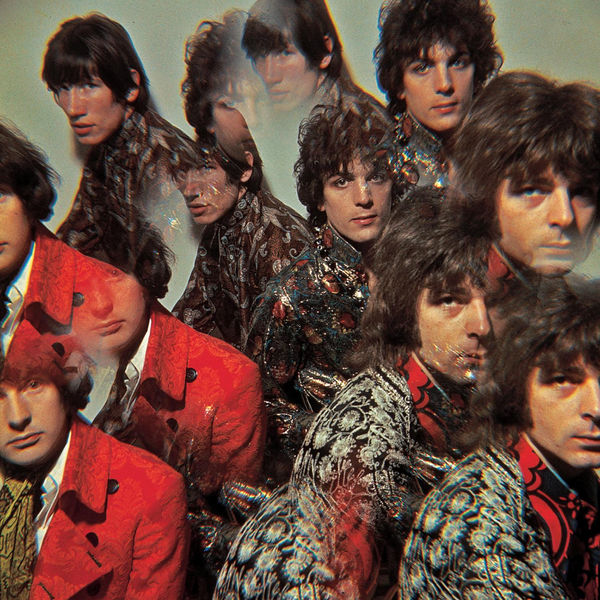
9. “The Piper at the Gates of Dawn” (1967)
For a glimpse into the mind of Syd Barrett, there’s no better place to start than “The Piper at the Gates of Dawn.”
As the group’s driving creative force in its early days, Barrett is all over Pink Floyd’s first record, earning songwriting credit for all but one track. This is evident in the overarching themes of wandering imagination and especially childhood nostalgia, which Barrett always maintained a fascination for. Even the album’s title is ripped from a chapter of his favorite children’s book, “The Wind in the Willows.”
The blend of Barrett’s whimsical lyrics with the band’s renowned psychedelic instrumentation allowed Pink Floyd to push the boundaries of modern music. Tracks like “Matilda Mother” and “Lucifer Sam” make the best of this mix, creating a listening experience unlike anything before. The heavy use of sound effects, reverb and other acts of studio experimentation were just as important, helping key tracks like the thundering opener “Astronomy Domine,” the zany 10-minute-long instrumental “Interstellar Overdrive” and the freaky closer “Bike” to become space rock standards.
As such, “The Piper at the Gates of Dawn” may prove a tough listen for those more adapted to Pink Floyd’s “classic” sound, but those willing to run with Barrett’s madness will find a rather captivating experience.
Of course, much of this madness sprouts from Barrett’s frequent use of hallucinatory drugs, which ultimately deteriorated his mind beyond repair and ended his time in Pink Floyd prematurely. It’s one of music’s greatest tragedies. Barrett’s mad genius may have been short-lived, but it shone brilliantly while it could.

8. “Obscured by Clouds” (1972)
The title for the most tucked-away gem in the Pink Floyd catalog has to go to 1972’s “Obscured by Clouds.” Similar to “More,” “Obscured by Clouds” served as the soundtrack to a little-known movie (“La Vallée”) and has been mostly buried by time. That’s a real shame. So many elements of the classic Pink Floyd sound that would soon appear on all-time great albums are found here in embryonic form.
For the most stark example, look no further than the side two opener “Childhood’s End,” a clear precursor to “Time” with its inward-looking lyrics, churning beat and blazing guitar solo. “Free Four” is also a clear indicator of things to come, as Waters eases through sinister lines such as “You shuffle in the gloom of the sickroom/And talk to yourself as you die” overtop of cheery handclaps and acoustic guitar strums.
Considering “Free Four” was the only single released from the album (and that it failed to chart anywhere but France), it should come as no surprise that “Obscured by Clouds” boasts an abundance of excellent deep cuts. The best is the folky beauty “Wot’s… Uh the Deal?,” which considers the rugged road to success and the reminiscing of days gone by upon finally reaching the destination (clearly another influence for “Time”). “The Gold It’s in the…” is a fun, driving rocker that heavily relies on Gilmour’s powerful guitar, while Wright’s gorgeous ballad “Stay” is one of Pink Floyd’s loveliest forgotten numbers.
In a sense, “Obscured by Clouds” is the perfect name, as its accomplishments would go on to become lost in the haze of bigger and better achievements. It’s a cruel fate that it certainly didn’t deserve.
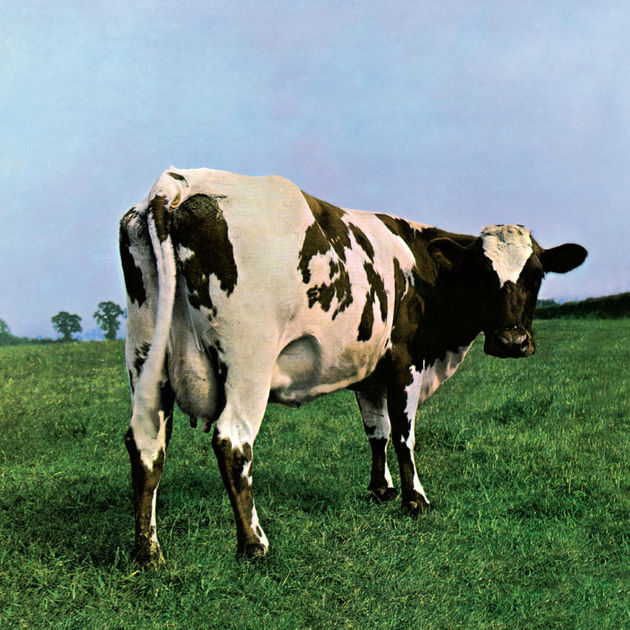
7. “Atom Heart Mother” (1970)
It wasn’t until 1970, two full years after Barrett’s leave, that Pink Floyd finally reeled in the sound they were looking for. It turns out that a shift away from psychedelic themes and raw experimentation and toward more straightforward progressive rock was the answer.
Just look at the side-spanning, 23-minute-long title suite. A prog beast in the truest sense, “Atom Heart Mother” weaves through different tempos, tones and instrumentation in six different stages while also mixing in orchestration, choral chants and other elements that wouldn’t be out of place on an Electric Light Orchestra record. It’s a Pink Floyd epic in germinal form. Eventually, they would refine the formula for later epics like “Echoes,” “Dogs” and “Shine On You Crazy Diamond,” but it’s still an excellent first attempt at a song of this nature.
Pink Floyd also tries a more poppy, pastoral tone for the rest of the album, and they pull it off with great success. Waters’ “If” is a delicate, introspective ballad that depicts the songwriter at his most docile, Wright’s “Summer ‘68” playfully recounts a prior experience with a groupie in tones both airy and symphonic, and Gilmour’s “Fat Old Sun” is a lovely, nostalgic piece that features an all-time great guitar solo to boot. It’s quite easy to see the roots of Pink Floyd’s eventual mainstream appeal taking form here.
Aside from the famous album art, “Atom Heart Mother” is another record lost on all except Floyd diehards. And yet, it remains a crucial moment for pathing the course of one of rock’s most monumental bands.
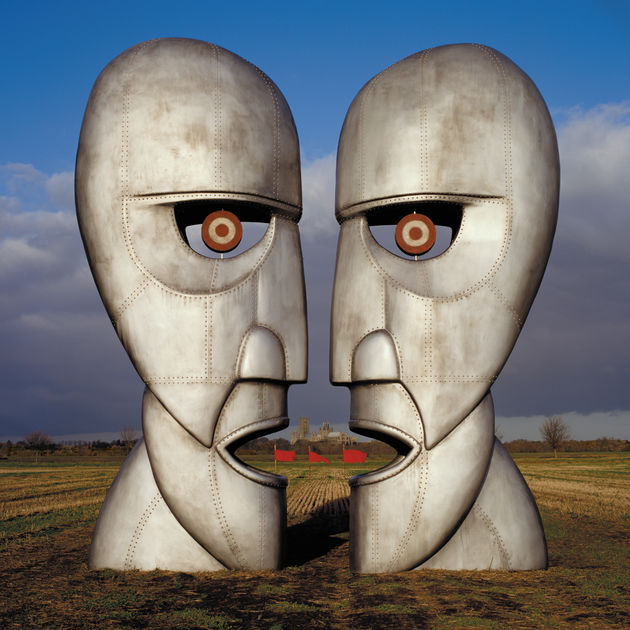
6. “The Division Bell” (1994)
When Waters went solo in 1985, he declared Pink Floyd a “spent force creatively.” With 1994’s “The Division Bell,” his former bandmates showed him just how wrong he was.
Featuring Gilmour, Wright and Mason at their most united since “Animals,” “The Division Bell” cuts down on the enormous cast of characters from the previous record and removes much of the pop excess in the process, making for a more smooth, streamlined experience. This breathing room allows Gilmour to deliver impassioned vocals and focused guitarwork overtop of Mason’s precise drumming and Wright’s ambient keyboards. It’s a true return to form.
Wright may be the most valuable piece here, as the atmospheric feel of his instruments sets the tone for the majority of the record. “The Division Bell” also features his first lead vocal since 1973 on “Wearing the Inside Out,” a somewhat jazzy trip into the keyboardist’s inner thoughts.
But this is just the tip of the iceberg in terms of what “The Division Bell” has to offer. There’s musical excellence all over this record, especially on the ethereal “Marooned,” the biting “What Do You Want from Me” and the mesmerizing “Keep Talking.” The nostalgic trio of “Poles Apart,” “Coming Back to Life” and “Lost for Words” are also worth a peek.
And then there’s the grand finale of “High Hopes,” a truly moving piece of music that ranks with the best work the band ever did. It served as the perfect swan song for Pink Floyd… at least, until the release of “The Endless River.”
While “The Division Bell” doesn’t consistently reach the same highs of Pink Floyd’s glory days, it comes astonishingly close. For a record this late into their career, that’s nothing shy of an enormous accomplishment.

5. “Meddle” (1971)
If “Atom Heart Mother” was the album that hinted at Pink Floyd’s new identity, “Meddle” was the one that cemented it.
Sandwiched between the growing period of the late ‘60s and the golden age of the mid/late ‘70s, “Meddle” sees Pink Floyd inch ever closer to the formula that would soon turn them into music gods. They nearly hit the nail on the head two years ahead of schedule, as “Meddle” proved to be equal parts accessible and groundbreaking.
Take, for example, the opening “One of These Days,” an absolutely roaring instrumental, propelled by Waters’ menacing bass riff before finally exploding into a cacophony of hard-rock goodness. Pink Floyd never tried anything this evil-sounding before or since.
“Meddle” also sees success in lighter tones, as the sleepy “A Pillow of Winds” and the easy “San Tropez” provide the perfect soundtrack for a lazy day in bed or on the beach. And any Pink Floyd fanatic knows that the inspiring “Fearless” remains one of the band’s greatest hidden gems, made all the better by the inclusion of Liverpool FC’s signature “You’ll Never Walk Alone” chant in the fadeout.
Of course, the record’s centerpiece is the side-spanning “Echoes,” a progressive rock masterwork that pairs improvisation and experimentation with impassioned musicianship, driven in large part by Wright’s iconic ringing piano intro. The 23-minute musical journey holds serious ground in the debate for Pink Floyd’s best ever moment.
The missteps on “Meddle” are few and far between, making for Pink Floyd’s first near-flawless listening experience; no small feat for a transitional record. It wouldn’t be long until they started reeling off musical perfection like it was nothing.

4. “The Wall” (1979)
“The Wall,” for many, is the epitome of the concept album. With previous records, Pink Floyd had toyed with the idea of a running thread through each song, similar to the Who’s “Tommy” or Genesis’ “The Lamb Lies Down Broadway.” “The Wall” is that idea fully fleshed out into 26 tracks of lyrical brilliance and musical excellence.
Taking inspiration from Waters’ internal struggles, as well as former bandmate Barrett’s rise to stardom and sudden collapse, “The Wall” paints the story of the protagonist Pink, who, over the course of his life, builds a metaphorical wall to isolate himself from the society that spurned him. It’s arguably Waters’ best work with the pen, as his words shine on tracks like “Mother,” “Nobody Home” and “Run Like Hell.” Only Waters could craft the lines “If you want to find out what’s behind these cold eyes/You’ll just have to claw your way through this disguise,” in the tone-setting opener “In the Flesh?”
And the musicianship is just as superb. Gilmour’s guitar is an absolute treat, most notably on the hard-rocking “Young Lust,” the mega hit “Another Brick in the Wall (Part 2)” and the hallucinatory “Comfortably Numb,” perhaps the very best example of his skill with the instrument.
Of course, with any musical project this ambitious, you’re bound to have a couple duds. “Don’t Leave Me Now” is a bit painful, and “Bring the Boys Back Home” is frankly pointless. But the lulls are surprisingly scarce for a record of this grandeur.
“The Wall” may be a long way removed from the experimentation and psychedelia that first began the Floyd’s career, but considering its consistency, intelligence and heart, it’s no wonder that “The Wall” and its legacy have thrived for its 40-odd years of existence.
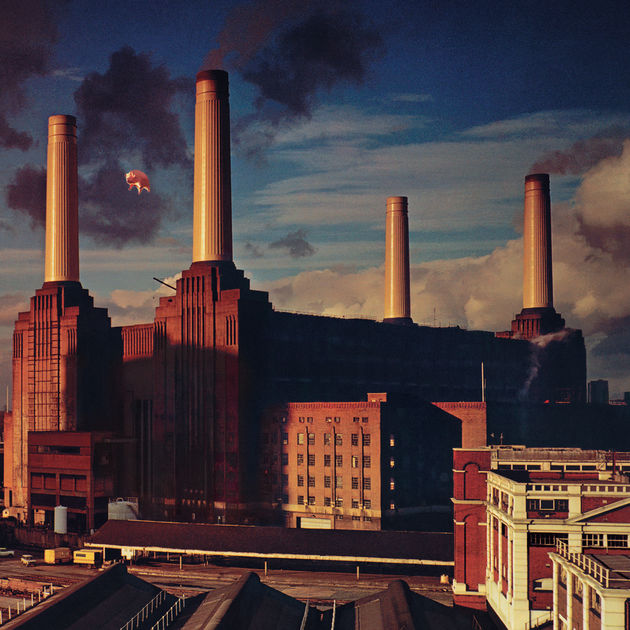
3. “Animals” (1977)
Pink Floyd was never one to shy away from politics. As far back as “A Saucerful of Secrets,” the band made it known that topics like war, death and corporate greed were within their boundaries. These political themes truly started coming to the forefront in the early/mid-‘70s with album tracks like “Money,” “Have a Cigar” and “Welcome to the Machine.” But could Pink Floyd make an entire LP out of it? “Animals” answered that question with an emphatic “yes.”
Drawing heavy inspiration from George Orwell’s famous 1945 novel “Animal Farm,” “Animals” separates humanity into three classes: “dogs,” the businessmen who lie, cheat and deceive to gain any edge they can, “pigs,” the greedy fat-cats who pull the strings from behind the curtain, and “sheep,” the mindless masses who remain blissfully unaware of the surrounding danger. Each group has a song of 10+ minutes dedicated to it, and each song is utterly fantastic.
The raw fury of “Pigs (Three Different Ones)” makes it the standout track, highlighted by Waters’ snide quips at British conservatism and Gilmour’s scorching guitar solo in the fadeout. But “Dogs” and “Sheep” aren’t far behind in excellence, the former spewing gritty lines such as “You have to be trusted/By the people that you lie to/So that when they turn their backs on you/You’ll get the chance to put the knife in,” and the latter manically shouting verses like “Bleating and babbling we fell on his neck with a scream/Wave upon wave of demented avengers march cheerfully out of obscurity into the dream.” Only Pink Floyd.
“The Wall” and “The Final Cut” would expand upon Pink Floyd’s image as a political act tenfold, but neither were able to match the perfect blend of clever, cutting lyrics and tremendous instrumentation found on “Animals.”
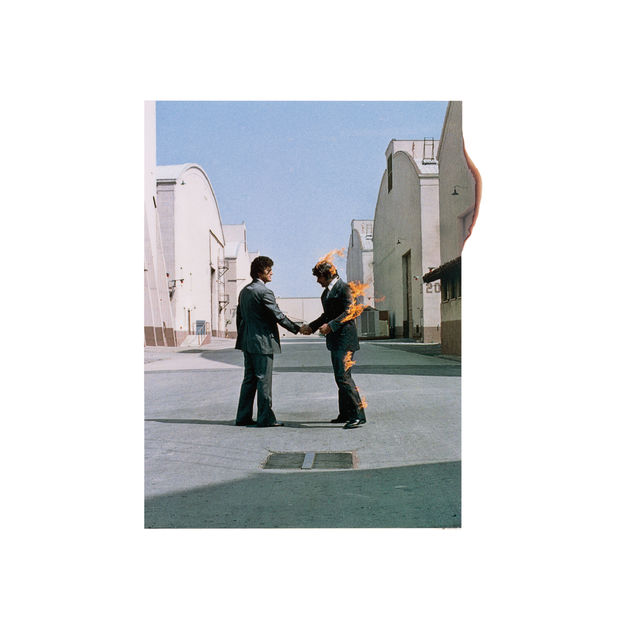
2. “Wish You Were Here” (1975)
You’ll be hard-pressed to find many albums more emotional than “Wish You Were Here.”
Built around the premise of absence, Pink Floyd’s landmark 1975 record covers themes of longing, loneliness and disillusionment—these emotions, of course, sprouting from the band itself. Waters, in particular, was becoming frustrated with the state of the music industry. His sentiments laid the groundwork for much of the new record; memories of Syd Barrett did the rest.
“Shine On You Crazy Diamond,” a direct tribute to Barrett, encapsulates the very best of what Pink Floyd had to offer. The nine-part, 26-minute suite that bookends the album in 13-minute halves is a spectacle of gorgeous, wistful verses and musical mastery at every level. Gilmour’s ringing guitar and Wright’s hazy keyboards provide the perfect backdrop for Waters’ impassioned lyrics about his former bandmate.
The feeling of melancholy is further exacted in the title track, which isn’t much more than Gilmour with a handful of acoustic guitar chords and some abstract imagery for lyrics. And yet, it’s one of the finest songs the band ever did. The anguish seeps through every line, tugging at the heartstrings with each passing note. It’s not just music, it’s poetry.
The remaining tracks, “Welcome to the Machine” and “Have a Cigar,” make up the space allotted for Waters’ discontents. The former paints the record industry as a cold, unfeeling beast, made all the more convincing by Wright’s humming synths, while “Have a Cigar” features guest vocalist Roy Harper’s grainy voice as the record company executive who cares more about turning a profit than the welfare of his musicians, boasting the timeless line, “Oh, by the way, which one’s Pink?”
It seems impossible for a record of such pain and alienation to be so welcoming. But Pink Floyd did the impossible rather frequently. “Wish You Were Here” is simply stunning—flawless from start to finish. But flawless isn’t enough to earn the top spot on this list. Not for Pink Floyd.
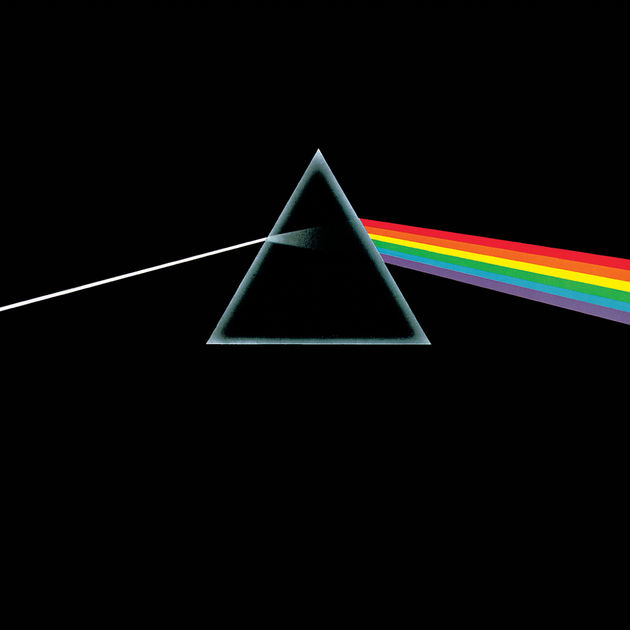
1. “The Dark Side of the Moon” (1973)
There’s a reason that every record collector owns a vinyl copy of “The Dark Side of the Moon.” There’s a reason that every college dorm room has the iconic prism cover art plastered on the wall or hanging up in the closet on the front of a T-shirt. You don’t become a cultural phenomenon of that magnitude by being average.
Truly, “The Dark Side of the Moon” deserves every bit of acclaim it receives. Over the course of 43 minutes, Pink Floyd unleashes the most remarkable, fulfilling, cohesive piece of art ever conceived.
Opening with the slow, thumping heartbeat of “Speak to Me” before giving way to the rich, melodious guitar tones of “Breathe,” “The Dark Side of the Moon” gets off and running quickly. It’s not long before you’re completely immersed in the frenetic synthesizers of “On the Run,” the sonic nostalgia of “Time” and the otherworldly vocalizations of studio guest Clare Torry on “The Great Gig in the Sky.” And that’s just the first side.
The second half is just as strong, with the sarcastic swagger of the ever-popular “Money” leading the way, followed by the sorrowful beauty of “Us and Them,” the groovy allure of “Any Colour You Like” and the burning insanity of “Brain Damage,” before finally climaxing with the explosive finale “Eclipse.”
And, just for kicks, wrap it all up with the same heartbeat that opened the album and the famous closing line, spoken just above a whisper: “There is no dark side of the moon, really. Matter of fact, it’s all dark.” You’ve just experienced the pinnacle of musical achievement. It does not get better than that.
Certainly, the numbers speak for themselves: 741 straight weeks on the Billboard Top 200, 45 million units sold, 15 times platinum in the U.S., et cetera, et cetera. But the legacy goes beyond the numbers. “Animals” may be tremendous, and “Wish You Were Here” may be flawless. But “The Dark Side of the Moon” is transcendent. No record in music history is as important, is as influential, is as revered as this one. It’s Pink Floyd’s crowning achievement.
DJ Bauer is a senior majoring in broadcast journalism. To contact him, email djbauer1999@gmail.com.









